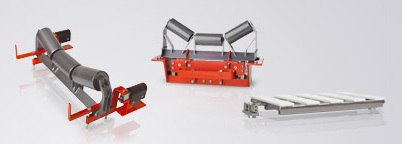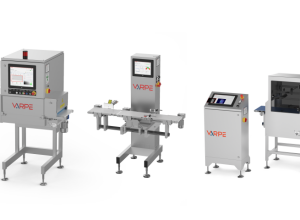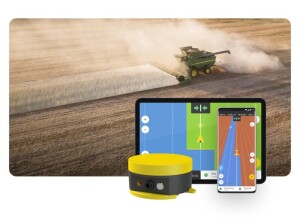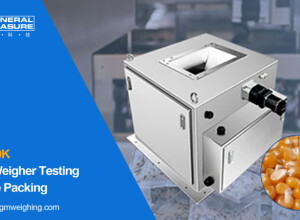So, what elements are combined to make a great belt scale? Let's review some of the essentials. These include:
- A full-width bridge with load cells mounted directly to the idler
- Load cells that do not react to forces associated with belt movement
- Minimized material buildup areas
- Scale performance from 20 to 100 percent of its rated capacity, with an integrated safety margin for peace of mind
- Approvals for trade and for hazardous locations
One consideration for idler spacing is retention time, or the amount of time that the material is on the weigh span (Figure 1). The belt speed of the application, combined with the weigh span distance, is used to calculate the retention time.

Figure 1. The material traveling on the belt is weighed as it enters and then leaves the weigh span. This period is called the retention time.
A short retention time can be achieved, for example, if a belt scale's load cells are mounted directly to the idler supporting the belt. Some belt scale designs use levers or check rods, but these require more time to ensure that the mechanical deflection is realized based on the material load. Direct loading is therefore faster than lever or spring loading, making it the more accurate solution in high-speed weighing applications.
The beauty of a solid design:
Regarding their design, load cells must react to the load as quickly as possible to facilitate low retention times. They also need to be rated for the proper capacities to support conveying applications, with stainless steel design for wash down and outdoor applications.

Figure 2: Clockwise from top right: single point, shear beam, bending beam, tension, and compression load cells from Siemens.
The biggest factor in load cell design is being able to react against the horizontal forces induced by belt movement. In Figure 3, this single-point load cell design for use in belt scales includes all of the key characteristics of a belt scale load cell -- but also features a unique, triple-beam design.

Figure 3: The front mounting of the MSI load cell helps minimize product buildup and increases rigidity across the conveyor width.
When it comes to horizontal forces, a triple-beam design performs the best, compared to other styles (Figure 4).

Figure 4: Load cells need to be protected from overload conditions or they can be damaged and require replacement.
The Siemens Milltronics MSI provides a real-world design context. This belt scale can monitor flow rates up to 12,000 tons per hour (13,330 short tons per hour) at belt speeds of up to 5m/s (16.4ft/s). With hazardous and trade approvals, the scale also has options for food grade conduit and fittings for wash down applications (Figure 5).

Figure 5. Simplicity of design ensures the lowest cost of ownership and the maximization of scale performance.
Today, the MSI is a highly effective, single idler load cell-based belt scale used around the globe in a diverse range of industries from food to mining.


























Interested? Submit your enquiry using the form below:
Only available for registered users. Sign In to your account or register here.